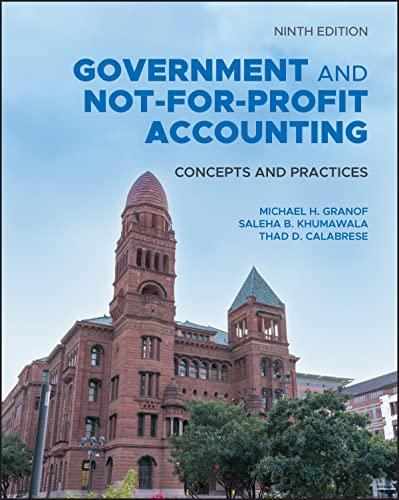A municipality expects to use a landfill evenly throughout the 25 years from January 1, 2X20, to
Question:
A municipality expects to use a landfill evenly throughout the 25 years from January 1, 2X20, to December 31, 2X44. Upon closing the landfill, it estimates that it will incur closing costs of $300,000. Thereafter, it anticipates it will have to monitor the site yearly for the following 30 years at an annual cost of $10,000.
The government intends to pay for the closure a nd monitoring costs evenly over the 25 years that the landfill is in use (2X20 through 2X44) by making annual cash contributions to a trust fund. The resources of the trust fund will be invested in government securities that can be expected to earn interest at a rate of 5 percent.
1. How much would the municipality need in the trust fund as of December 31, 2X44, to satisfy its monitoring obligations for the next 30 years? How much would the government need in the fund to pay the closing costs?
2. How much would it have to contribute to the fund during each of the 25 years it brings waste to the landfill to have a sufficient amount in the fund at the end of 2X44 to satisfy its obligations for both the closure a nd the monitoring costs?
3. Per the GASB reporting standards, what amount would the government have to report as its landfill closure and monitoring expenses during each of the 25 years (2X20 through 2X44), irrespective of how much it actually contributes to the trust fund? Assume that the costs were as estimated.
4. If the government were to make the contributions as you calculated in part 2, but charged the expenses that you calculated in part 3, would it be overstating its closure and monitoring expenses? Explain. What might be a factor that mitigates the overstatement of the expenses?
Step by Step Answer:

Government And Not For Profit Accounting Concepts And Practices
ISBN: 9781119803898
9th Edition
Authors: Michael H. Granof, Saleha B. Khumawala, Thad D. Calabrese





